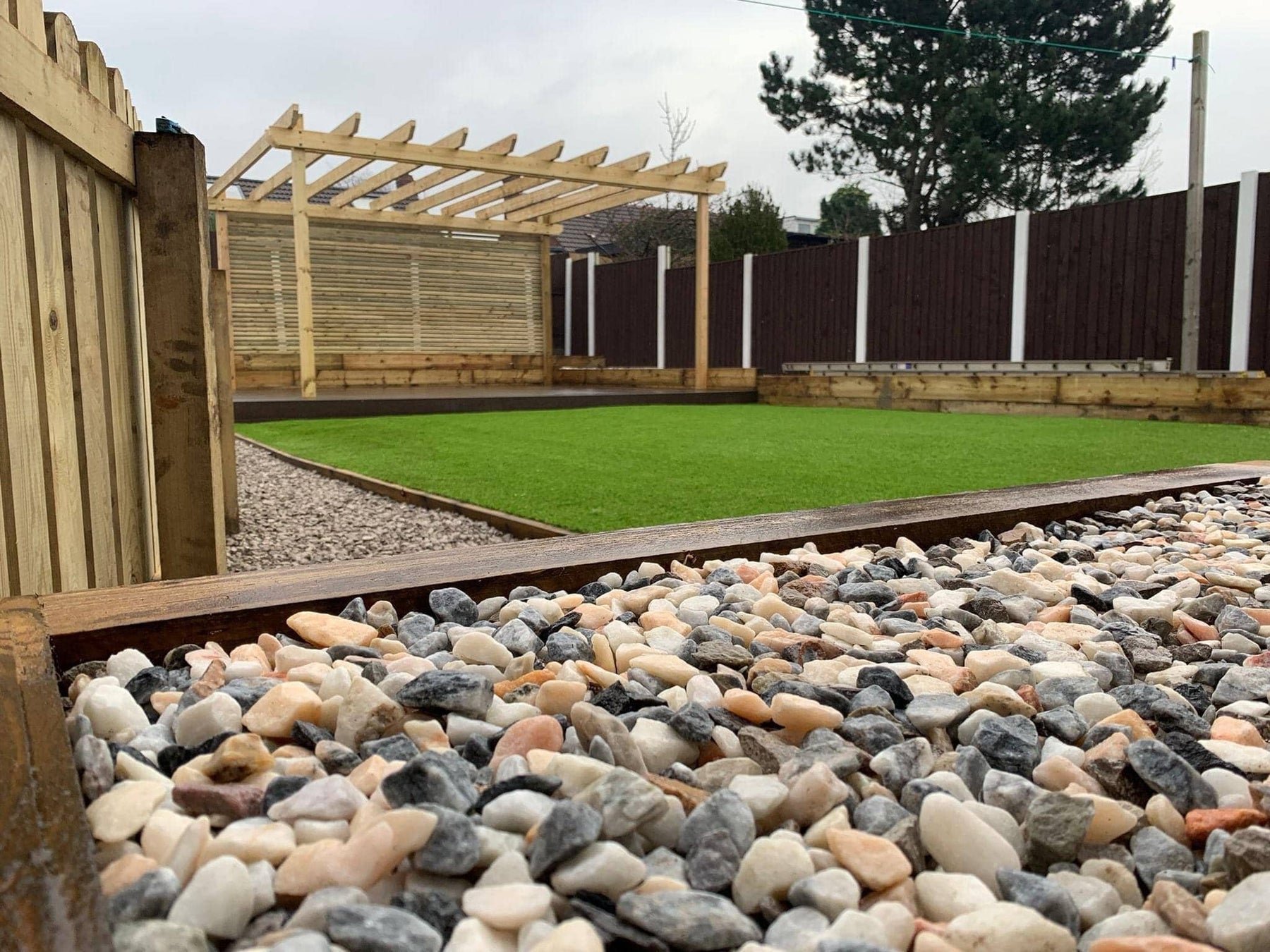
How to install artificial grass
-
Measure and mark the area where you want to install the artificial grass. Make sure to mark the area accurately to ensure that you have enough artificial grass to cover the entire area.
-
Excavate the area and remove any existing grass, weeds, or debris from the marked area. You can use a spade or shovel to remove the grass and you can use a weed killer to kill the weeds. When excavating you need to be aware of your finished level taking into account sub base materials.
-
Lay a geotextile membrane / weed barrier over the marked area. A geotextile membrane / weed barrier is a thin layer of fabric that stabilises the excavated area. It will allow drainage but stop materials passing through into the soil and prevent weeds from growing through the artificial grass.
-
Install a base for the artificial grass. You need to use MOT type 1 as a base for the artificial grass. The MOT base should be at least 2 inches thick and needs to be compacted using a wacker plate. Then you need to use granite dust or grit sand to a depth of at least 2 inches and compacted to create a stable foundation for the artificial grass.
-
Lay the artificial grass over the base. Start at one end of the marked area and unroll the artificial grass as you go. Make sure to lay the grass in the same direction to ensure that the blades of grass all lie in the same direction.
-
Secure the edges of the artificial grass. Use landscape staples, nails or glue to secure the edges of the artificial grass to the ground. This will prevent the grass from moving or shifting.
-
Trim the edges of the artificial grass. Use a sharp pair of scissors or a utility knife to trim the edges of the artificial grass to fit the marked area.
-
Brush the artificial grass to make it look more natural. Use a stiff brush or a power broom to brush the artificial grass in the same direction as the blades of grass.
-
Enjoy your newly installed artificial grass!
